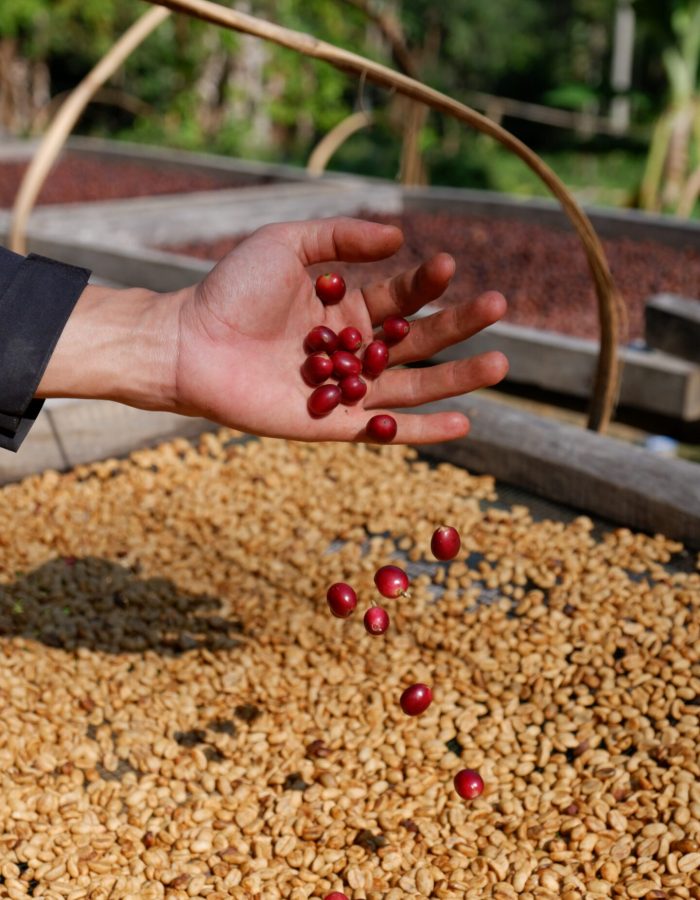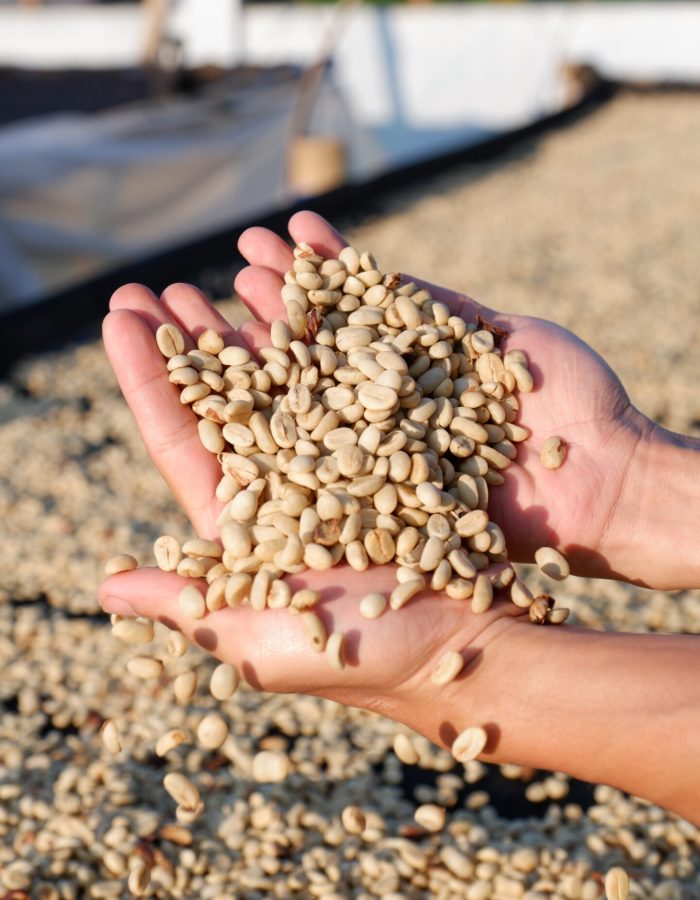COFFEE PROCESSING

Post-harvest processing transforms harvested coffee cherries (raw material) into a nearly finished product, known as green beans. This post-harvest processing includes washing, hulling (wet milling and dry milling), drying, and sorting.
DRYING PROCESS
The harvested red coffee cherries undergo various post-harvest processing methods, all of which include a crucial drying stage. This step is essential to reduce the moisture content of the coffee beans to an optimal level, ensuring they are adequately dried and ready for hulling and/or roasting. Proper drying not only preserves the beans’ quality but also enhances their storage stability and flavor development.

Natural (Dry Process)
The Natural process is a post-harvest coffee processing method carried out naturally without the use of machinery or washing. After being harvested and sorted, the coffee cherries are directly sun-dried until sufficiently dried. This process heavily relies on weather conditions as it requires a relatively longer drying time compared to other post-harvest methods.
Honey (Pulped Natural)
In this process, the harvested and sorted coffee cherries are depulped using a machine, leaving the coffee beans still covered in a parchment layer and sticky mucilage. The beans are then directly sun-dried until the moisture content reaches approximately 10-12% before hulling. The mucilage, which is rich in sugars and has a sticky, honey-like texture, remains attached to the beans during drying, imparting unique flavors.


Fully Washed (Wet Processing)
In the Fully Washed process, harvested coffee cherries are depulped, and the mucilage adhering to the beans is thoroughly washed off. Washing typically occurs after a fermentation phase (which also serves as a sorting step), either by soaking the beans in water or allowing them to ferment without water until the mucilage loosens. Alternatively, a demucilage machine can be used. Afterward, the parchment-covered coffee beans are sun-dried until the moisture content is reduced to around 10-12%.
Source: Coffee: Production, Quality, and Chemistry (2019); The Craft and Science of Coffee (2016), The Little Coffee Know-It-All (2015)
